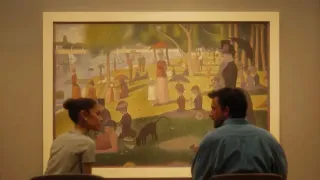January 12, 2016
Powder Horn Believed Owned By Alexander Hamilton Sold
Shawn Marsh READ TIME: 2 MIN.
A powder horn that some experts believe was used by Alexander Hamilton sold for $115,620 at auction on what would have been his birthday.
Hamilton, the nation's first treasury secretary and one of the country's Founding Fathers, is now the focus of a blockbuster hip-hop Broadway musical called "Hamilton." The owner of the powder horn, a New Jersey dentist, hoped buzz from the show would help boost bids, which started at $10,000 on Monday at Sterling Associates in Closter, New Jersey.
The auction house owner, Steven D'Atri, said he was happy with the price, but not surprised. He said the buyer did not wish to be identified.
Dr. Warren Richman acquired the horn from a patient in 1990 and spent years trying to document its authenticity and studying its etchings, which include a unicorn. A descendant, an arms appraiser and a forensic documents expert said they believe Hamilton used the engraved piece of cow horn to carry gunpowder.
It is inscribed with his name and 1773, the year he entered what today is Columbia University. Hamilton would have used it leading troops during the Revolutionary War and as an aide to Gen. George Washington.
Hamilton's birthday is recognized as Jan. 11, but historians are not sure whether he was born in 1755 or 1757. He was mortally wounded in a duel with Aaron Burr in 1804.
Hamilton has lately become the unlikely subject of a smash musical that's the hottest ticket in New York.
Written by and starring Lin-Manuel Miranda, the show tells the true story of how an orphan emigrant from the Caribbean rose to the highest ranks of American society, as told by a young African-American and Latino cast.
Visitation to the Hamilton Grange National Memorial in New York City is up almost 250 percent per month since the Broadway show premiered, John Warren of the National Park Service said.






